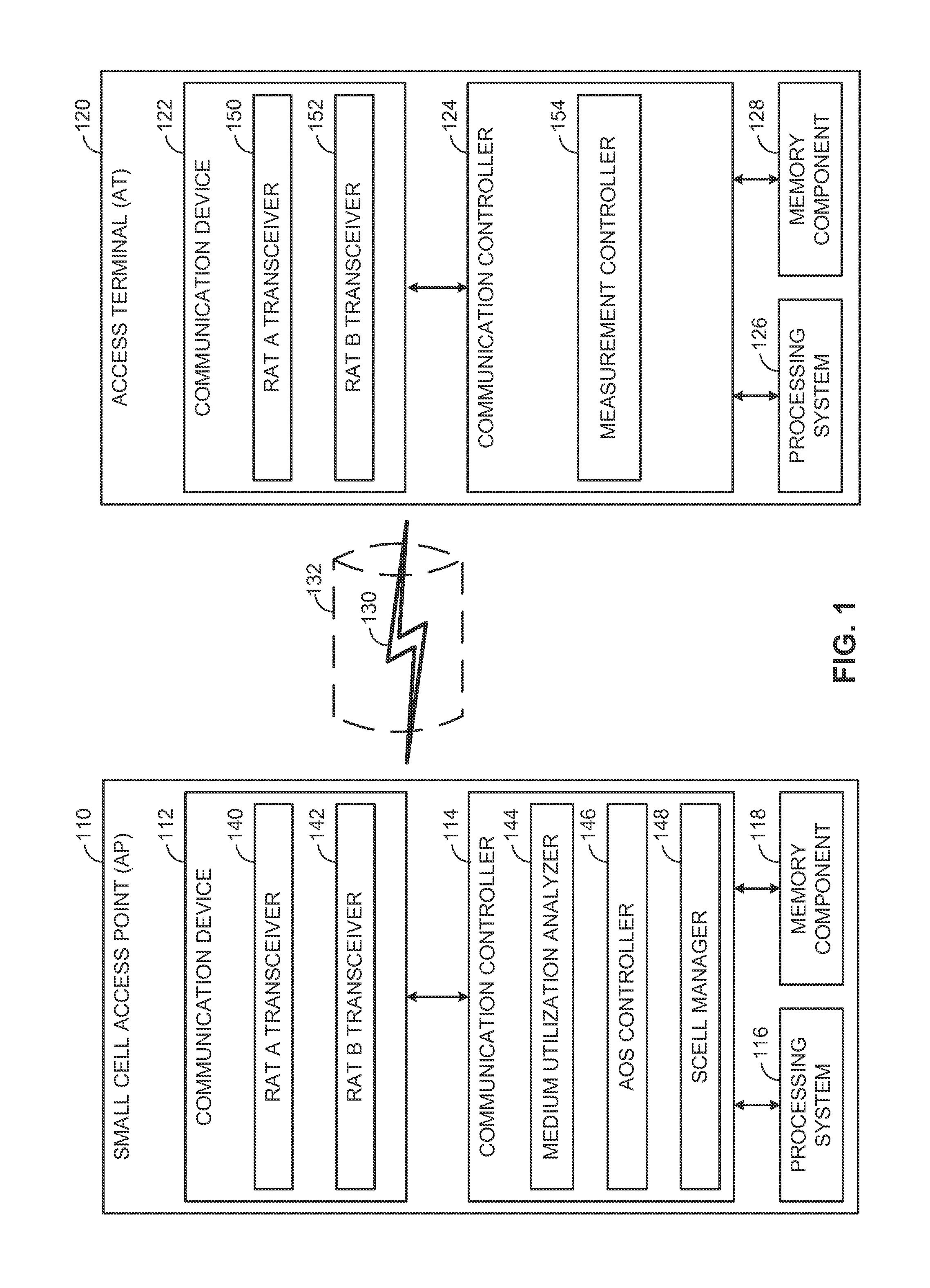Carrier sense adaptive transmission (CSAT) measurements in shared spectrum
a carrier sense adaptive transmission and shared spectrum technology, applied in the field of telecommunications, can solve problems such as encroaching on operations
- Summary
- Abstract
- Description
- Claims
- Application Information
AI Technical Summary
Benefits of technology
Problems solved by technology
Method used
Image
Examples
Embodiment Construction
[0027]The present disclosure relates generally to an example long-term Time Division Multiplexed (TDM) communication scheme referred to herein as Carrier Sense Adaptive Transmission (CSAT). A CSAT communication scheme may define a series of activated and deactivated periods of operation on a given communication medium. In addition, as described in more detail below, an Always-On-State (AOS) period may be periodically provided on top of the CSAT communication scheme to provide supplemental measurement opportunities (e.g., by temporarily disabling the cycling between activated and deactivated periods). Access terminals performing the measurements may also be configured to refrain from doing so during the deactivated periods.
[0028]More specific aspects of the disclosure are provided in the following description and related drawings directed to various examples provided for illustration purposes. Alternate aspects may be devised without departing from the scope of the disclosure. Additi...
PUM
 Login to View More
Login to View More Abstract
Description
Claims
Application Information
 Login to View More
Login to View More - R&D
- Intellectual Property
- Life Sciences
- Materials
- Tech Scout
- Unparalleled Data Quality
- Higher Quality Content
- 60% Fewer Hallucinations
Browse by: Latest US Patents, China's latest patents, Technical Efficacy Thesaurus, Application Domain, Technology Topic, Popular Technical Reports.
© 2025 PatSnap. All rights reserved.Legal|Privacy policy|Modern Slavery Act Transparency Statement|Sitemap|About US| Contact US: help@patsnap.com



